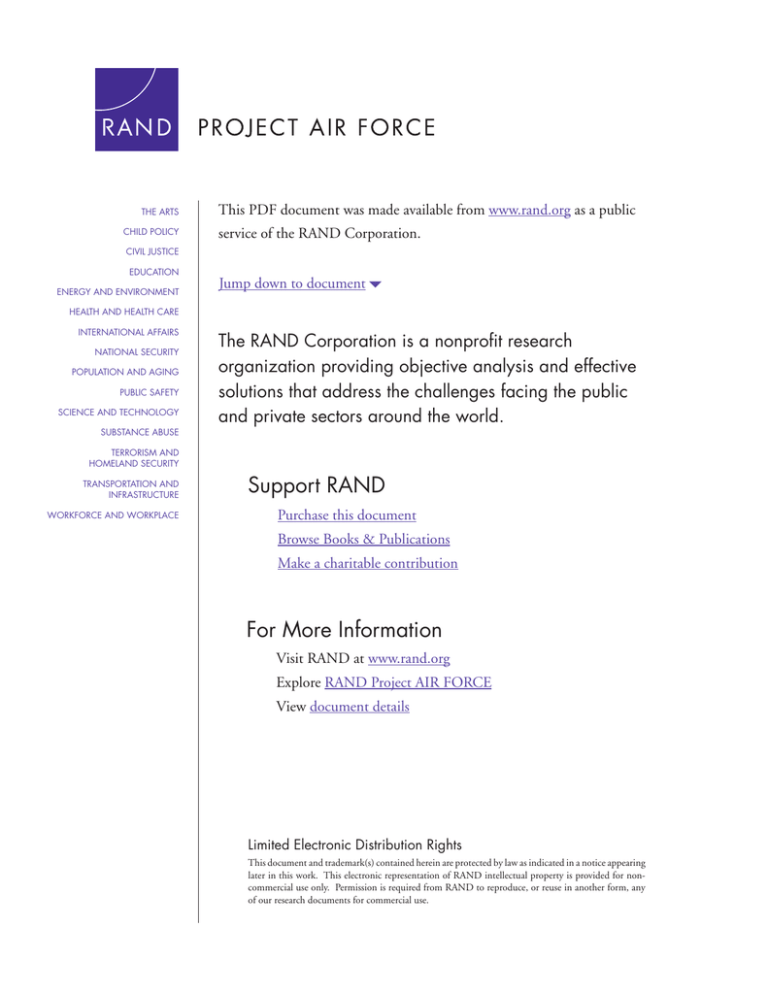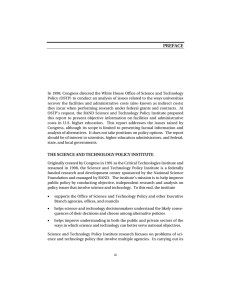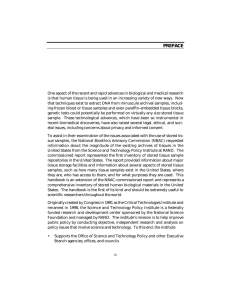
THE ARTS
CHILD POLICY
This PDF document was made available from www.rand.org as a public
service of the RAND Corporation.
CIVIL JUSTICE
EDUCATION
ENERGY AND ENVIRONMENT
Jump down to document6
HEALTH AND HEALTH CARE
INTERNATIONAL AFFAIRS
NATIONAL SECURITY
POPULATION AND AGING
PUBLIC SAFETY
SCIENCE AND TECHNOLOGY
SUBSTANCE ABUSE
The RAND Corporation is a nonprofit research
organization providing objective analysis and effective
solutions that address the challenges facing the public
and private sectors around the world.
TERRORISM AND
HOMELAND SECURITY
TRANSPORTATION AND
INFRASTRUCTURE
WORKFORCE AND WORKPLACE
Support RAND
Purchase this document
Browse Books & Publications
Make a charitable contribution
For More Information
Visit RAND at www.rand.org
Explore RAND Project AIR FORCE
View document details
Limited Electronic Distribution Rights
This document and trademark(s) contained herein are protected by law as indicated in a notice appearing
later in this work. This electronic representation of RAND intellectual property is provided for noncommercial use only. Permission is required from RAND to reproduce, or reuse in another form, any
of our research documents for commercial use.
This product is part of the RAND Corporation technical report series. Reports may
include research findings on a specific topic that is limited in scope; present discussions of the methodology employed in research; provide literature reviews, survey
instruments, modeling exercises, guidelines for practitioners and research professionals, and supporting documentation; or deliver preliminary findings. All RAND
reports undergo rigorous peer review to ensure that they meet high standards for research quality and objectivity.
Theory and Methods for
Supporting High Level
Military Decisionmaking
Paul K. Davis, James P. Kahan
Prepared for the United States Air Force
Approved for public release; distribution unlimited
The research described in this report was sponsored by the United States Air Force under
Contracts F49642-01-C-0003 and FA7014-06-C-0001. Further information may be
obtained from the Strategic Planning Division, Directorate of Plans, Hq USAF.
Library of Congress Cataloging-in-Publication Data
Davis, Paul K., 1943Theory and methods for supporting high level military decisionmaking / Paul K. Davis, James P. Kahan.
p. cm.
Includes bibliographical references.
ISBN 978-0-8330-4039-8 (pbk. : alk. paper)
1. Command of troops. 2. Decision making—Methodology. 3. Military planning—Decision making.
I. Kahan, James P. II. Title.
UB210.D388 2007
355.6'830973—dc22
2007012304
The RAND Corporation is a nonprofit research organization providing objective analysis
and effective solutions that address the challenges facing the public and private sectors
around the world. RAND’s publications do not necessarily reflect the opinions of its
research clients and sponsors.
R® is a registered trademark.
© Copyright 2007 RAND Corporation
All rights reserved. No part of this book may be reproduced in any form by any electronic or
mechanical means (including photocopying, recording, or information storage and retrieval)
without permission in writing from RAND.
Published 2007 by the RAND Corporation
1776 Main Street, P.O. Box 2138, Santa Monica, CA 90407-2138
1200 South Hayes Street, Arlington, VA 22202-5050
4570 Fifth Avenue, Suite 600, Pittsburgh, PA 15213-2665
RAND URL: http://www.rand.org/
To order RAND documents or to obtain additional information, contact
Distribution Services: Telephone: (310) 451-7002;
Fax: (310) 451-6915; Email: order@rand.org
Summary
A Framework for High-Level Decision-Support Systems
In this report, we describe an approach to high-level decision support for a Joint Forces Air
Component Commander in combat operations or a Chief of Staff in defense planning. Our
central theme is the fundamental importance of dealing effectively with uncertainty, whether
in effects-based operations, building what the Air Force refers to as the Commander’s Predictive
Environment, or planning future forces with the methods of capabilities-based planning.
Although many features of the future can be predicted with reasonable confidence, our
emphasis is on the many that cannot. Indeed, high-level decisionmakers are commonly afflicted
with deep uncertainties that materially affect the choice of a course of action but that cannot be
substantially resolved by merely working harder. Such issues have been studied in a variety of
fields, and the answer to the problem they pose is clear: The solution is to adopt a course of action
that is as flexible, adaptive, and robust as possible. This is in contrast to making a best estimate
of the future and preparing only for that.
Our central idea is that instead of treating uncertainty as an annoyance that merely disrupts developments on the margin, it is better to proceed with the expectation of surprise developments and to have great skill in recognizing when adaptations are needed and in making
them at the right time. Although this may seem straightforward, it is diametrically different
from the attitude reflected in much work on decision-support systems, including the related
processes for developing courses of action. That attitude reflects the uncritical “can-do” spirit
often reflected in concept development and even in doctrinal writings. As discussed in the
Appendix, some official materials on effects-based operations convey this attitude, which
undercuts serious thinking. To make matters worse, much related military terminology seems
as though it were designed to complicate and obfuscate. A good decision-support environment
should have clear structures and terminology; it should confront uncertainty directly.
This report sketches the framework of a high-level decision-support environment consistent with an uncertainty-sensitive approach. That framework includes principles such as being
top-down, expressing concepts in simple and intuitive language, dealing explicitly with risk
and uncertainty, and providing zoom capability so that decisionmakers can readily discover
and question the bases for key assumptions and assessments.
The framework recognizes that high-level decisionmakers vary greatly in style. Some are
relatively more “rational-analytic,” preferring to see many options and analyses. Others are
more intuitive, or “naturalistic,” preferring to leap ahead in developing the course of action
xiii
xiv
Theory and Methods for Supporting High-Level Military Decisionmaking
they believe is suitable, leaving the filling in of details and the validation of assumptions to
subordinates. Each style has its own considerable strengths and weaknesses. Although schoolbooks and decision-support-system designers tend to favor rational-analytic methods, and realworld leaders often lean toward intuitive methods, we suggest an approach to top-down decision support that could accommodate both styles, attempting to exploit the strengths and
mitigate the weaknesses of each. The product of decisionmaking in both cases should be flexible, adaptive, and robust strategies (FAR strategies); the question is how best to develop and
choose among FAR strategies using processes and methods decisionmakers themselves are
comfortable with.
The key to our approach is recognizing that (1) typical rational-analytic decisionmakers are aware that the options presented to them may lack creativity, imagination, and an
adequate appreciation of “soft” factors; and (2) typical intuitive decisionmakers are aware that
(unstated) risks exist in executing their strategies. Our framework attempts to serve both types
of decisionmaker—by enriching options and their evaluation for the former, and by identifying potential roadblocks to be overcome in achieving the intent of the latter. Although the
processes supporting the two styles will usually be different, in either case the result should
improve the courses of action developed and chosen.
Consistent with the broad framework, we describe two explicit methods and their related
tools. The first involves portfolio-style thinking and analysis, which is currently being used in
defense planning and which we adapt here for supporting commanders. It is a good mechanism for balancing risks and other considerations in choosing a course of action.
The second method is a novel modification of what has come to be called foresight exercises. This method addresses the need to include humans effectively in dealing with uncertainty. Although it is only one of several methods for doing so, it is interesting and would fill
a gap. The intent of this and other methods we mention in less detail is to provide decisionmakers with a more analytically structured and intellectually rigorous approach to human
gaming—an approach that preserves the virtues of human gaming while improving upon the
validity of conclusions drawn from it. The term foresight applies because the purpose is not to
“predict” how developments will unfold, but rather to have the foresight to recognize enough
of the possibilities to be materially and mentally prepared to adapt when surprising developments occur, as they assuredly will.
Implications for Investment in Decision Tools
Having provided a framework and presented some concrete examples, we next present a more
extensive discussion of available methods and enabling technologies and make some recommendations about investment priorities.1
The implications for investment are several. Generally, a high priority should be placed on
methods for discovering, constructing, and evaluating FAR strategies. If models and simula1 This portion of the report draws heavily upon research done cooperatively with projects for the Office of the Secretary of
Defense (Dreyer and Davis, 2005; Davis and Henninger, 2007; Davis and Shaver, unpublished).
Summary
xv
tions are to be consistent with this priority, they must themselves be adaptive so as to represent
appropriately the dynamic and adaptive behaviors of political and military leaders, the organizations they command, societal groups, and so on. Accomplishing this will require adopting
concepts from complex adaptive systems and system dynamics, among other methods. The
concepts and methods needed should include not only the most common variety of so-called
agent-based models, which are developed bottom-up with an eye toward discovering emergent
phenomena, but also approaches taken from control theory, game-theoretic simulation, and
operations research. Further, more investment should go into top-down approaches, which
have the potential of better representing all-important command-and-control considerations,
including those for a highly distributed world.
Another implication for investments relates to the need to make better use of people. A
sober view of reality quickly reveals that current-day modeling and simulation are nowhere
near adequate for thinking through the myriad of relationships and possibilities that arise in
human and other complex adaptive systems. In contrast, human-intensive methods such as
war-gaming, foresight exercises, Red-teaming, and more-formal activities such as assumptionbased planning all have the virtue of unleashing human creativity and drawing on broad-based
human expertise and intuition. Typically, however, they are poorly structured and potentially
misleading. It follows that those developing decision-support environments should invest in
refining such methods and making them more rigorous and in developing approaches to simulation that make optional human participation easy and productive, as in the new activity
called massive scenario generation, which involves a sequence of human play, model development, scenario generation, observation, and iteration.
One aspect of such investment should be a new round of analytical work to better understand how and when to best use experts—whether to inform model development, consult
during crisis or operations, or provide outside critiques. Although many techniques for using
experts have been developed over the years, advancements in effects-based operations or development of a Commander’s Predictive Environment will require expanding upon them, with
special attention to the need to better represent uncertainties and risks meaningfully and to
abstract insights for well-hedged planning after having done so.







